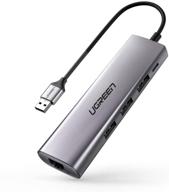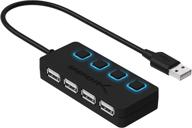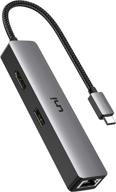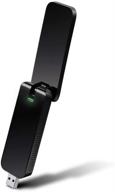
Review on 🔌 TP-Link AV1000 Powerline Ethernet Adapter (TL-PA7017P KIT): Gigabit Port, Plug and Play, Extra Power Socket – Ideal for Smart TV Setup by Kristi Davis

Destroyed my C9 WiFi router
(Updated Review) Update on 2nd day of ownership: These powerline adapters completely destroyed my TP-Link Archer C9 router. is it a joke I've owned C9 since September 2015 (two months to three years) and it's almost perfect. During these tests of the powerline adapter, I never once touched my C9 (acting as a basic access point). About an hour after plugging in a pair of these powerline adapters (one floor below C9, one floor above) slowly but surely all my 2.4 devices, then 5.0G, go out. My smart plugs have stopped responding, Alexa has stopped responding, my outlet loses connection. I just noticed my damn nest rebooted a minute ago for no reason. Meanwhile, the powerline adapters chug along as I run tests around the house. After unplugging the powerline adapters, I have to cold boot the C9 - it takes a few hours to a day at best before doing the same and dropping all my devices. Meanwhile, if I connect to the ethernet port on the back of the C9 (which essentially acts as a switch), I can ping it, get an IP address from my other DHCP server, and connect through my gateway, but NO WIFI. The SSIDs are passed around, but even when I manually assign an IP address I can't seem to get packet traffic through the router (not tested with Wireshark). Powerline adapters directly affect the radios or power supplies (see below) in this router. I've been configuring and debugging home, corporate, and industrial networks as an EE for 15 years, so this is nothing new to me. When testing these adapters, if in doubt I'd say I did something unintentionally to mess things up. But so far it has worked 100% for several months (installed after the move) - and worked three years ago. If this is a coincidence, sorry for the speculation but I just posted it. I tested my original C9 12v power supply at 3 amps for 15-20 minutes under load and it works as expected. Out of curiosity, I plugged in the powerline adapter and checked the 12V output of the charged adapter: As expected, the powerline adapters inject nearly 800mV of high-frequency noise *through* the power supply. This noise occurs every 35ms for about 400µs at the output of the power supply and yes, directly in the router. It wasn't even a transmission between adapters, just an apparent preamble and payload, probably a broadcast to discover other nodes. Of course, this applies to any powerline adapter, but depending on the frequency, this noise can easily destroy the switching mode control. If not the power supply itself (I haven't noticed if it's linear or switching, but I have to assume it switches to get 3.3A at 12V), any downstream electronics (C9 is no exception) run into problems fairly easily (with any powerline adapter). Having seen and experienced this myself, I absolutely avoid powerline adapters. Do yourself a favor and go all out with WiFi. (Original review) 1st day of ownership: My setup looks like this: 1st floor: Internet and gateway/router, NAS. 2nd floor: cat5 from 1st floor to Archer C9 which acts as an access point. 3rd floor: requires a wired connection for various office equipment (printers, etc.). Speed results: 1) with blocks connected together (one connected to the other): - TPlinkUtil showed 997Mbps (124MB/s). File transfer from NAS 328 Mbps (41 Mbps) - WiFi NAS transfer 376 Mbps (47 Mbps)2) one unit on 1st floor, the other on 2nd floor on 3 different outlets (kitchen / Dining Room / Living Room): - TplinkUtil showed 150-229 Mbps (19-29 MB/s). File transfer from NAS 120-146Mbps (15-17MB/s) - WiFi NAS transfer (5G AC) 528Mbps (66MB/s)3) one unit on 1st floor, the other on 3rd floor Stick on different sockets (office, bedroom ): -TplinkUtil showed 34-79Mbps (4-10Mbps). Transfer files from NAS at up to 96Mbps (12MB/s) - Wi-Fi NAS transfers at 184Mbps (23MB/s). Obviously the benefits of using these adapters over a Wi-Fi adapter are very small, at least in my setup. A cheap, unnamed 300N USB adapter was able to give me the same speed. Finally, if surfing the web and running speed tests is all you need, you might be fine. A note: remember that in most American homes, service is split into two separate 120 "legs." Where the circuit breaker is physically mounted in the panel determines which leg it sits on (it often alternates between one leg and the other when viewing the switches vertically). To get the full performance from (any) powerline adapters, they *must* be on the same leg as the other adapters. Yes, they share neutral and ground, but to get the MIMO advantage you need the other leg as well.
- New to my collection
- Good but not great
New products
Comments (0)
Top products in 🖧 Network Adapters
Another interesting products

UGREEN USB 3.0 Ethernet Adapter Hub with RJ45: Fast Gigabit Ethernet Converter, 3 Ports USB 3.0 Hub Compatible for MacBook, iMac, Surface Pro, Chromebook, Laptop, PC

11 Review

HB-UMLS Sabrent USB 2.0 Hub with 4 Ports and LED Power Switches for Each Port

12 Review

🔌 Juiced Systems Silver BizHUB USB-C Multiport Gigabit HDMI Hub with 3 USB 3.0 Ports, Gigabit Ethernet, 4K HDMI, SD/Micro SD, and USB-C Power Delivery

11 Review

🔌 uni USB C Hub with Ethernet Adapter, 4K HDMI, Gigabit Ethernet, and 3 USB 3.0 Ports for MacBook Pro, iPad Pro, XPS

11 Review







